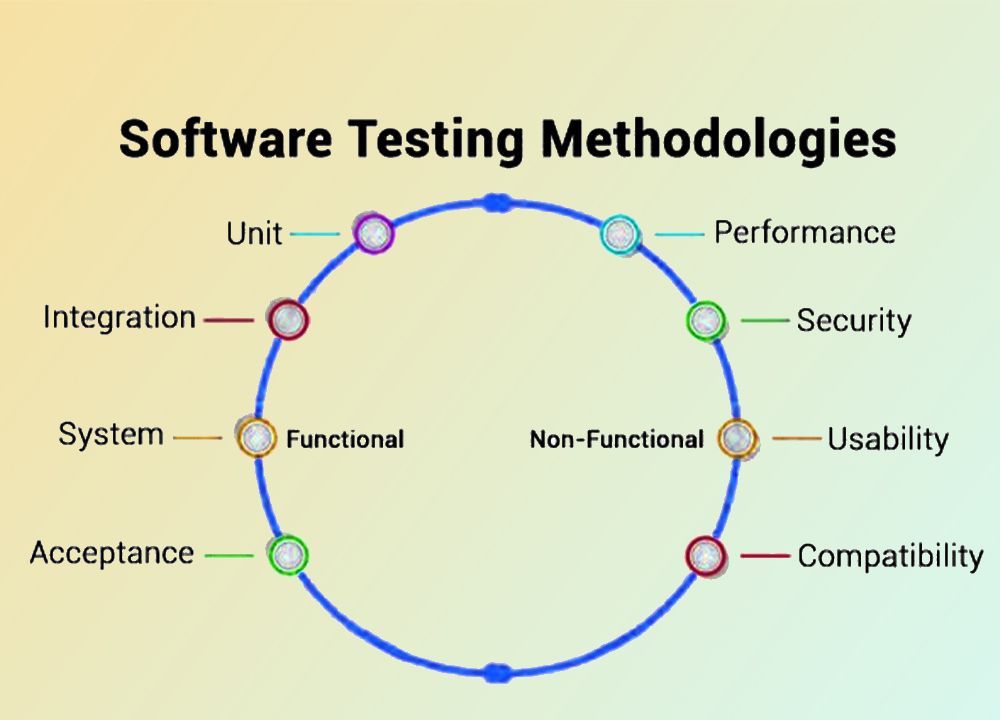Testing techniques refer to the specific methods used to assess individual components or functionalities of software, such as unit testing or regression testing. These techniques focus on uncovering defects at a granular level.
On the other hand, testing methodologies are broader frameworks guiding the entire testing process within software development.
Examples include Agile or Waterfall methodologies. While techniques zoom in on specific aspects, methodologies provide a structured approach for the entire testing journey.
In simple terms, techniques are the tools used for detailed examinations, while methodologies are the overarching strategies ensuring a systematic and efficient testing process throughout the software development life cycle.
What Are Some Common Software Testing Techniques?

Unit Testing
Unit testing involves testing individual units or components of a software application in isolation. Each unit, which can be a function, method, or class, is tested to ensure that it performs as intended. This technique helps identify and fix errors early in the development process, contributing to overall code reliability.
Integration Testing
Integration testing focuses on evaluating the interactions between different units or modules of a software system. The goal is to uncover defects that may arise when these components are integrated.
This technique ensures that the integrated parts work seamlessly together and that the overall system functions as expected.
Functional Testing
Functional testing is centered around validating that the software’s features and functionalities meet the specified requirements. Test cases are designed to assess how well the application performs its intended tasks.
This technique ensures that the software meets user expectations and delivers the desired functionality.
Regression Testing
Regression testing involves retesting the software after changes or updates to ensure that new modifications haven’t adversely affected existing functionalities.
It aims to catch any unintended side effects and ensures that the software remains stable and reliable throughout its development lifecycle.
Which software testing methodologies are commonly used in development?
Several software testing methodologies are commonly used in development to ensure the systematic and effective testing of software products.
Waterfall Model
In the waterfall model, the development process is divided into distinct phases, and each phase must be completed before moving on to the next.
Testing is typically performed after the development phase. This sequential approach provides a structured and easy-to-follow framework.
Agile Methodology
Agile is an iterative and incremental approach to software development. Testing is integrated throughout the development lifecycle, with frequent iterations and continuous feedback.
This methodology emphasizes collaboration, adaptability, and delivering small, functional increments of the software.
V-Model
The V-Model is an extension of the waterfall model and emphasizes a corresponding testing phase for each development stage. It visualizes the relationship between development and testing activities, ensuring that testing activities are planned and executed in parallel with their corresponding development phases.
DevOps
DevOps is not just a testing methodology but an approach that integrates development and operations. It promotes collaboration and communication between development, testing, and operations teams, allowing for continuous testing and delivery. Automated testing plays a crucial role in the DevOps lifecycle.
How do testing techniques differ from testing methodologies?
Testing techniques and testing methodologies are distinct aspects of the software testing process, differing in their scope and purpose.
Testing Techniques
Testing techniques refer to specific methods or approaches used to verify and validate the correctness of individual components or functionalities of a software system.
These techniques are focused on uncovering defects at a granular level. They involve testing specific aspects of the software, such as units, components, or functionalities.
Testing Methodologies
Testing methodologies, on the other hand, are broader frameworks that guide the entire testing process within the software development life cycle.
These methodologies provide a structured approach for planning, executing, and managing the testing activities. They encompass the overall strategy, processes, and principles governing the testing process from start to finish.
What is the importance of Choosing the Right Testing Techniques and Methodologies?
Choosing the right testing techniques and methodologies is of utmost importance in the realm of software development for several critical reasons
Enhanced Software Quality
Selecting appropriate testing methods ensures the early detection and correction of defects. This proactive approach leads to a higher level of software quality, reducing the likelihood of bugs or issues affecting the end-users.
Optimized Resource Utilization
Efficient testing techniques save time and resources. Choosing methodologies wisely helps streamline the testing process, ensuring that efforts are focused and effective. This is particularly vital when working with tight schedules or limited resources.
Early Issue Identification
Different testing techniques are designed to uncover specific types of issues. By choosing the right methods, development teams can identify and address problems early in the process, preventing them from escalating and negatively impacting the final product.
Alignment with Project Requirements:
Tailoring testing approaches to match the unique requirements of a project is crucial. It ensures that testing efforts are relevant, aligned with project objectives, and capable of addressing specific challenges posed by the nature of the project.
User Satisfaction and Trust
Thorough testing leads to a more reliable and user-friendly software experience. When users encounter fewer issues and enjoy a smoother interaction with the software, their satisfaction increases. This, in turn, builds trust in the software and encourages repeat usage.
FAQ
What are two main types methodologies of software testing?
There are various methodologies in software testing, with two main types being Agile and Waterfall. Agile emphasizes flexibility and iterative testing, while Waterfall follows a sequential, phased approach.
How many testing techniques are there?
The number of testing techniques is diverse, including methods like Unit Testing, Integration Testing, Functional Testing, and more. The specific count can vary, but these techniques cover a broad spectrum to ensure comprehensive testing.
How many testing techniques are there in software testing?
Software testing encompasses numerous techniques, ranging from Unit Testing and Regression Testing to Performance Testing. The exact count isn’t fixed, but these techniques play a crucial role in validating different aspects of software.
What is manual testing methodologies?
Manual testing is a methodology where testers execute test cases without the use of automation tools. It involves a human tester interacting with the software, mimicking end-user behavior to identify bugs and issues.
Is waterfall a methodology?
Yes, Waterfall is a software development methodology. It follows a linear, sequential approach, where each phase must be completed before moving to the next. Testing in Waterfall occurs after the development phase.
What are the three main methods of testing?
The three main methods of testing are Unit Testing, Integration Testing, and System Testing. These methods ensure that individual components, their interactions, and the entire system function correctly.
Which is the best testing technique?
There isn’t a one-size-fits-all answer; the best testing technique depends on the context and goals. For example, Unit Testing is excellent for catching code-level issues, while User Acceptance Testing ensures alignment with user expectations.
Which software testing method is best?
The choice of the best software testing method depends on project requirements. Agile is favored for flexibility, while Waterfall suits well-defined projects. Choosing the right method is crucial for effective testing.
What are agile testing methods?
Agile testing methods are approaches used in Agile software development. They involve continuous testing throughout the development lifecycle, aligning with Agile principles of flexibility, collaboration, and delivering incremental improvements.
Final thoughts
To sum it up, understanding the difference between testing techniques and methodologies is like knowing the right tools for the job. Techniques are specific tools for checking small parts, and methodologies are big plans for testing everything.
Choosing the right ones is key to making software better and ensuring it works well. It’s like building with the right blocks – using them correctly creates reliable and trustworthy software.
So, in the world of software, picking the right testing tools and plans is essential for creating programs that people can rely on and enjoy using.

